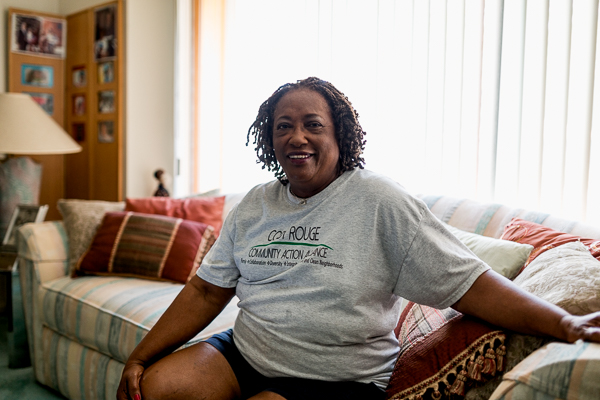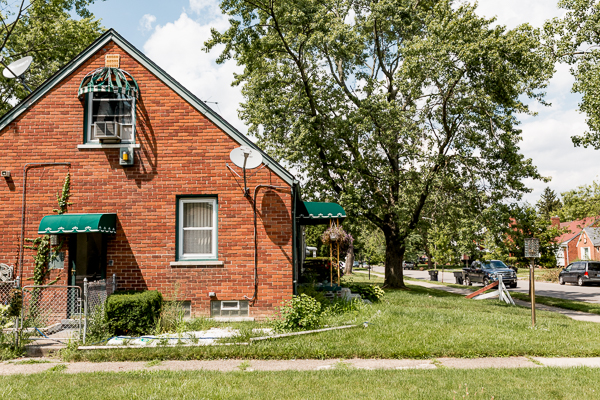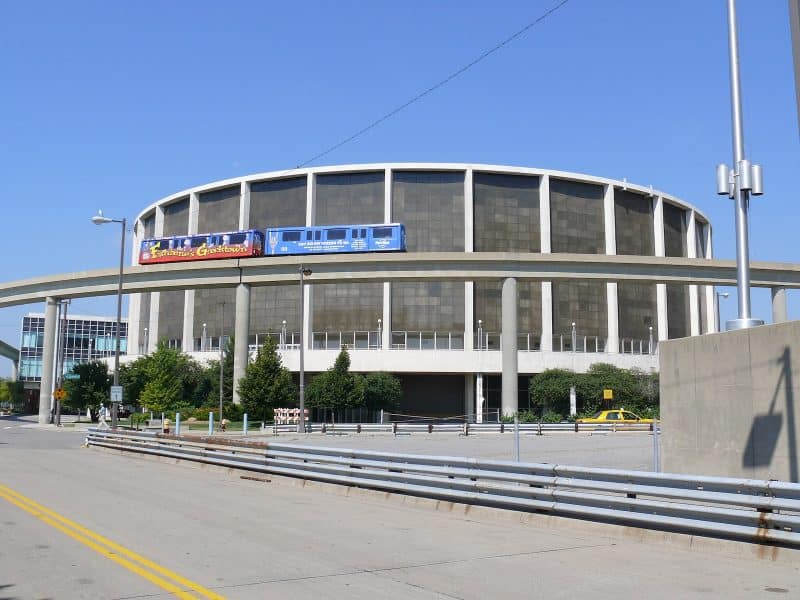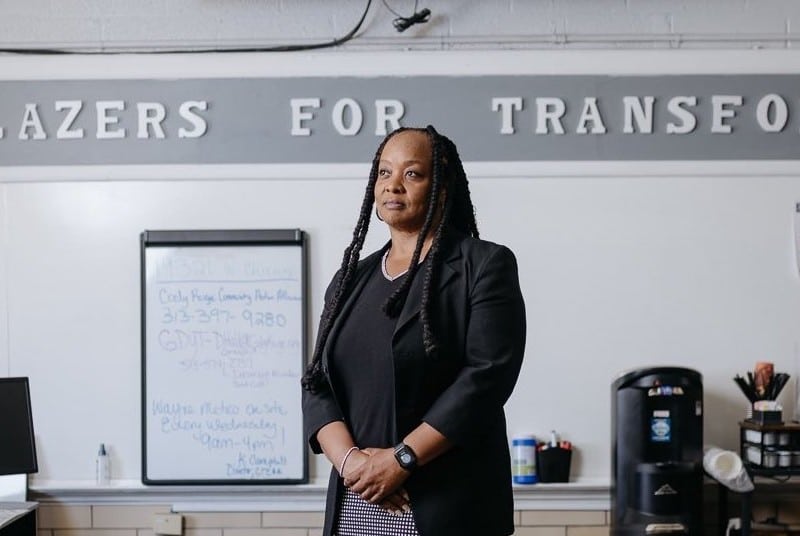Introducing “Voices of Cody Rouge,” our latest neighborhood-based series
Over the next few months, we'll be publishing weekly articles from Cody Rouge, showcasing the authentic stories of residents, community stakeholders, and local organizations helping to create positive change in the neighborhood.

It was 36 years ago on a balmy day in August when Chris Bond moved into her home on Piedmont street in the Franklin Park/Cody Rouge community. She remembers the exact day because she was heavily pregnant with her only child, a son. The Bonds quickly fell in love with the vibrant community on the far west side of Detroit. She recalls that “the trees were so large, their leaves hung into the street like a meadow.”
Cody Rouge is bordered on the east by the Southfield Freeway and on the west nearly touches Redford Township. To the north, it is bordered by Fullerton Street and I-96 and south it reaches Detroit’s southern city limits near Dearborn. It also encompasses the sub-neighborhoods of Franklin Park and Warrendale. At 8.5 square miles, it is one of the largest neighborhoods in Detroit.
Central to the Cody Rouge neighborhood is its crown jewel, the 1,184-acre, River Rouge Park. The land that became Rouge Park was purchased by the City of Detroit in the 1920s, and through the 1950s the neighborhood around it sprouted and evolved.
Initially, this “Village in the City” catered to the needs of manufacturing families working for and associated with the famous Ford Rouge Plant, at one point the largest industrial complex in the world. Later, Cody Rouge became known for its large population of Detroit police officers and firefighters, most of whom moved out when the state dropped residency requirements for city employees in 1999. Today, the neighborhood has around 37,000 residents.
Many parts of the Cody Rouge community still have a quiet, suburban-like feel. Houses with neatly manicured lawns are a source of pride for homeowners like the Bonds, who try to encourage and support their neighbors who rent.
“I try to talk to my neighbors about their lawns, taking their trash cans back in, things like that,” Bond says, “It’s the small things that you do that build community. One of them is taking pride in what you have.”


But homeownership has been a challenge in Cody Rouge. During a ten-year span, home vacancies quadrupled, putting a great deal of strain on the stability of the community.
Community participation has been key in inspiring pride in this tenacious neighborhood. In a community meeting, Barb Matney of the Warrendale Community Organization explained, “When you’re a neighborhood that has been forgotten about for so long, you learn to depend on each other because you realize you’re all you have.”
Just over ten years ago, the Cody Rouge Community Action Alliance (CRCAA) was born out of this sense of necessity. Formerly part of the 10-year Skillman “Good Neighborhoods” initiative, stakeholders recognized that the rapidly changing face of the neighborhood required organization to ensure its stability.
Led by executive director Kenyetta Campbell, herself a lifelong resident of Cody Rouge and graduate of Cody High School, CRCAA has been instrumental in maintaining and growing her community. The organization’s mission is three-fold and simple: community engagement, youth development, and community revitalization.
Strong community leadership is one of the things that sets Cody Rouge apart from many other communities. Campbell is the first to acknowledge that her she’s one of many such leaders in the neighborhood.
“Youth and residents have been working collectively for 10 years to organize and build from the bottom up,” Campbell said in an article for Model D about their resident-led neighborhood plan. “It’s an organized community, and people can kind of feel it when you come to the neighborhood.”
Over the next few month’s, we’ll be spending a lot more time in Cody Rouge. As part of a ten-part, dedicated series in the neighborhood, “Voices of Cody Rouge” will explore the stories in one of Detroit’s most underreported neighborhoods and highlight the amazing transformation that is taking place, from one of desperation to one of empowerment. From a community in need of philanthropy to one of attracting investment.
We’ll be telling weekly stories of youth engagement, housing revitalization, safety, transportation, community gardens, and love for the next three months. We hope you’ll keep reading each week.
This article is part of “Voices of Cody Rouge,” a series that showcases the authentic stories of residents, community stakeholders, and local organizations helping to create and shape positive transformation in the Cody Rouge neighborhood of Detroit. This series is made possible with support from Quicken Loans, IFF, and the Cody Rouge Community Action Alliance.
Photos by Nick Hagen.





